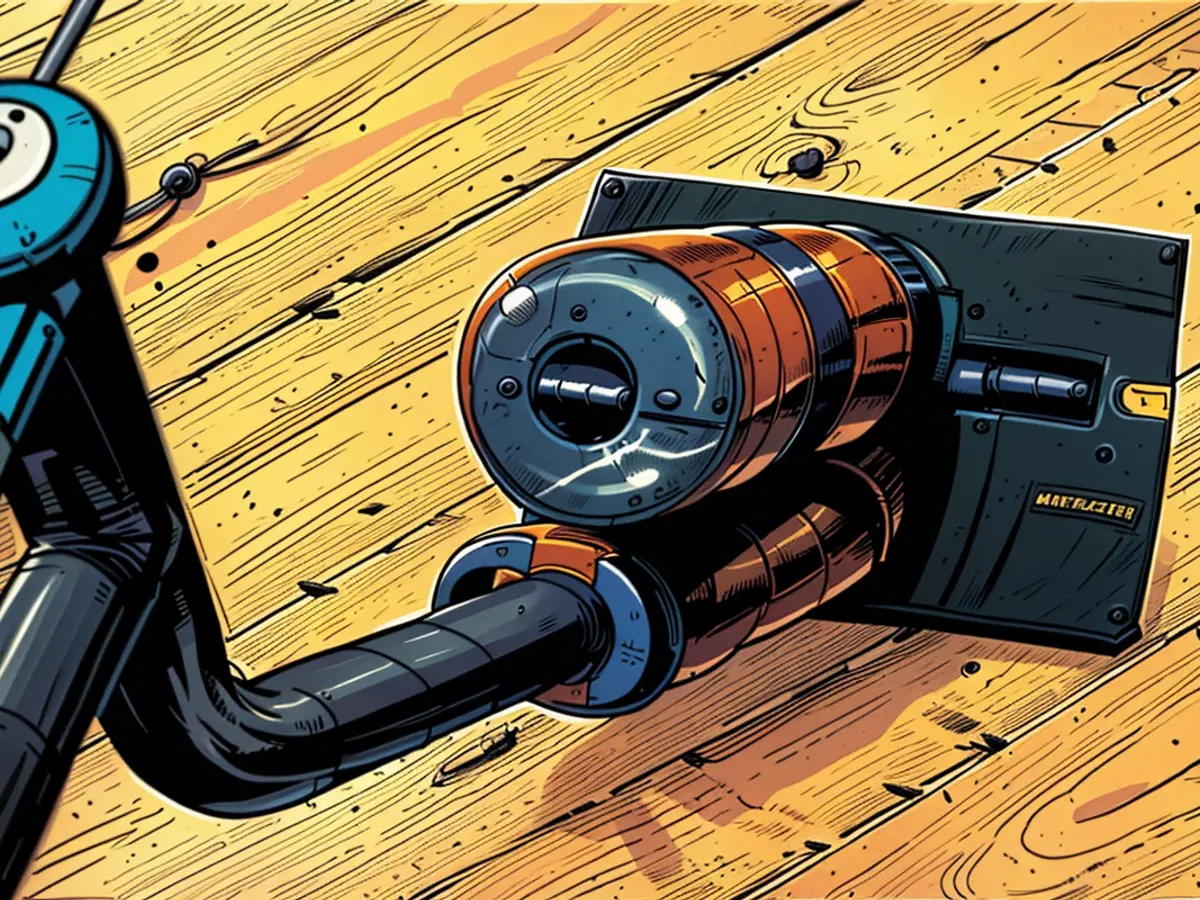The Dyson WashG1 washes differently than other E-mops
The Dyson WashG1 sucks not, but washes only electrically, and separates coarse dirt and dirty water. In practical tests, it convinces with a strong cleaning performance, but it is also quite maintenance-intensive.
Dyson no longer sells only vacuum cleaners. Hair care products, air purifiers, and fans, as well as recently headphones, are also part of the Britons' range. The nearly 700 Euro WashG1 is the first electric floor washer from Dyson. Like with many of its devices, the manufacturer is looking for a new approach, which is also the case with the E-Mop. The practical test from ntv.de shows that Dyson has succeeded in principle, but there is still room for improvement for the successor.
The Wash G1 is more compact than most competitors, which is mainly due to the fact that it is not a suction cleaner. Dyson calls it that itself, but in reality, the device wipes the floor only with two rotating fabric rollers. Only the separated dirt water is sucked into a tank. Separated means with the WashG1 that coarse dirt and liquids are separated with the help of two similarly rotating brushes. Coarse particles therefore do not end up like usual in the dirty water tank, but in a container between the rollers. This is also a special feature of the Dyson mop.
Fortunately, the floor washer also has a compact packaging, which is largely free of plastic. The device is easy to assemble, as it only requires attaching the handle. In addition, there is a charging station that is connected to the power cord.
Simple operation, but no printed manual
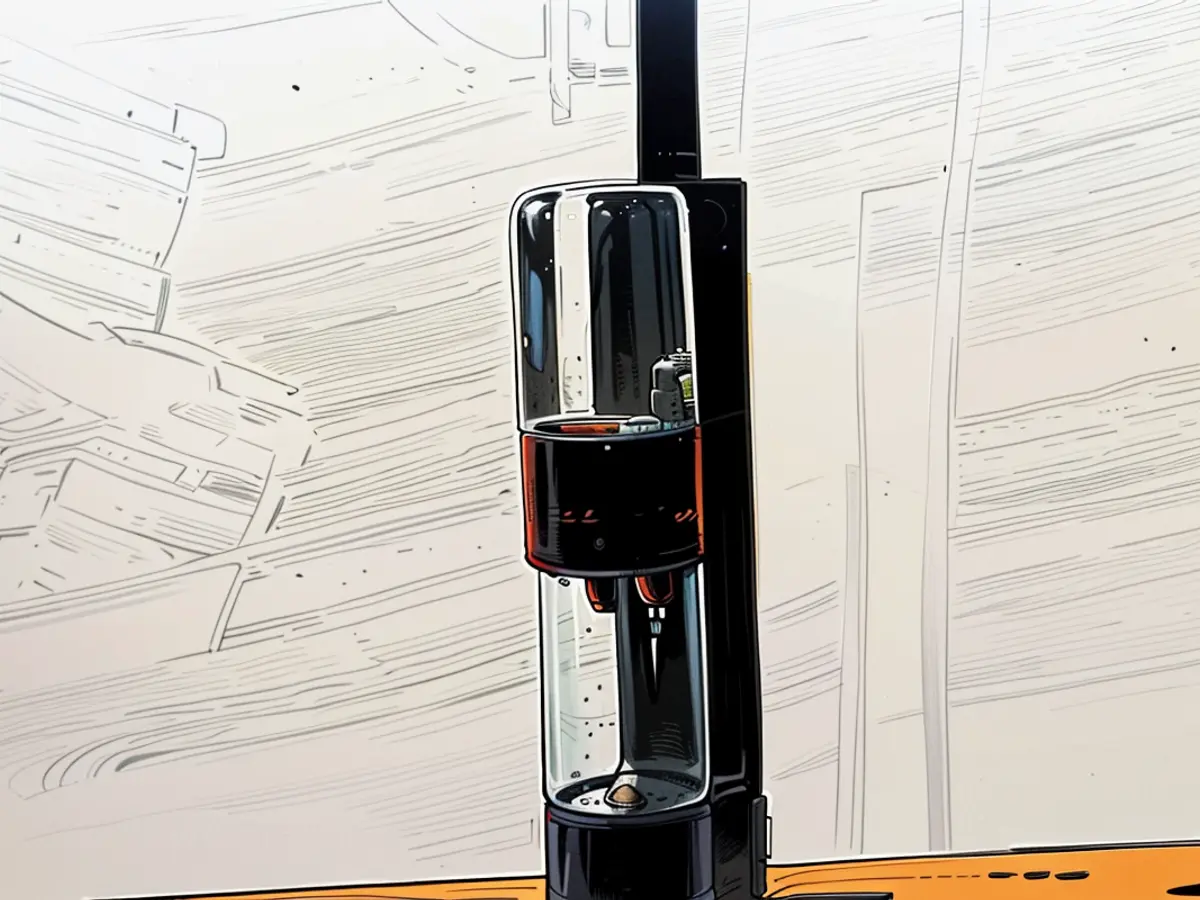
In theory, one could start right away if the manufacturer provided a user manual - but they don't. Instead, one is asked to install the Dyson app, where one can find short instruction videos. Under "Services," there is also a user manual, but only in English and without graphics. In principle, one only needs the app to activate the device. But that can also be done on Dyson's Website, where a comprehensive German user manual can be downloaded.
Once you understand how the E-Mop works, it's simple. The handle of the device has a small display, on which one sees the most important information. These are mainly three cleaning strengths, which differ through different moisture levels. One selects them via a button integrated into the display. Below that is another button, which one presses when particularly large amounts of water are needed for lifting stubborn dirt. The red button is the on/off switch.
Before starting a cleaning mission, one only needs to fill the freshwater tank. How much or what cleaning agent to use is the user's decision, Dyson makes no recommendations.
Strong at edges, a bit too high for furniture
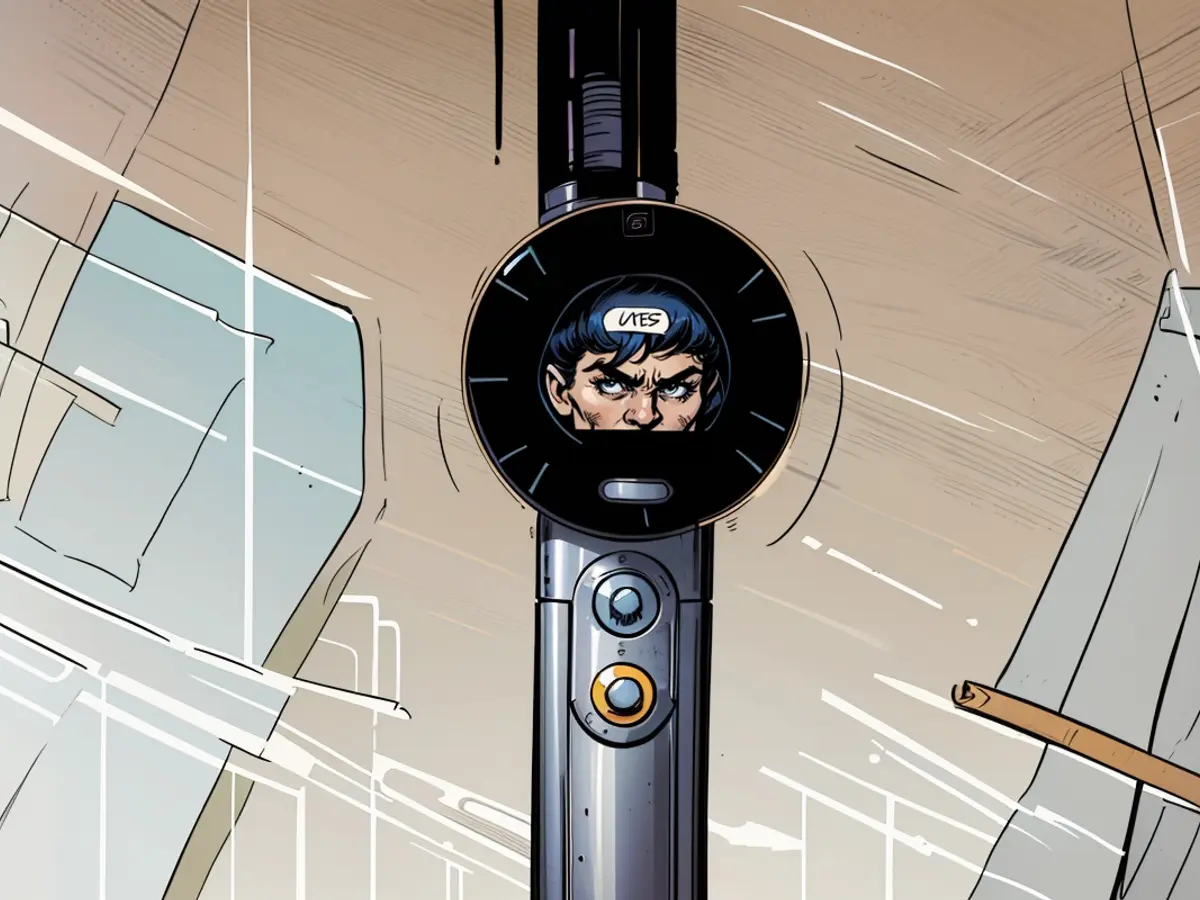
Although the WashG1 is compact, it is not a lightweight when fully tanked with around 5 kilograms. For a thorough cleaning, however, a corresponding pressure is necessary, and with the help of motorized rollers, the E-Mop can be maneuvered effortlessly through the apartment.
It shows itself not only agile in curves, it can also get relatively flat. However, it cannot wipe under furniture that allows less than 17 centimeters of air, and edges seldom pose a problem, as long as they are approached with the right side. The rollers almost reach the edge in this case.
At the place where the Dyson WashG1 comes, it makes thorough cleaning. The only problems it encounters are deep grooves between the floorboards, as it lacks a suction function. Otherwise, the first level usually suffices, and the maximum mode is rarely needed. In the test, for instance, the button had to be pressed for dried ketchup and mustard, which is a challenge for every mop.
A "breakfast disaster" consisting of milk, cereals, and a cracked raw egg was wiped up by the E-Mop in a few seconds on Level 1, after the large eggshells were manually removed. However, this led to the fine filter being quite wet after the cleaning. This is not a problem, as the small bin holds tightly. The pump inside, however, makes maintenance less pleasant, which is already quite laborious.

Maintenance-Friendly Goes Differently
One must empty the dirt tray and the dirty water container, and fill it with fresh water if necessary, before starting the self-cleaning process, when the E-Mop is in the charging station. The charging station works excellently, and after a few minutes, the rollers and brushes were almost perfectly clean.
However, the work is essentially done only if the floor washer is used regularly without long pauses. After the self-cleaning, the rollers are still wet, and they need to be dried out to prevent them from aging. Other devices can handle this through a heating element in the station itself. Additionally, one must find a place where the roller and possibly the dirt tray can dry.
Best Suited for Frequent and Short Use
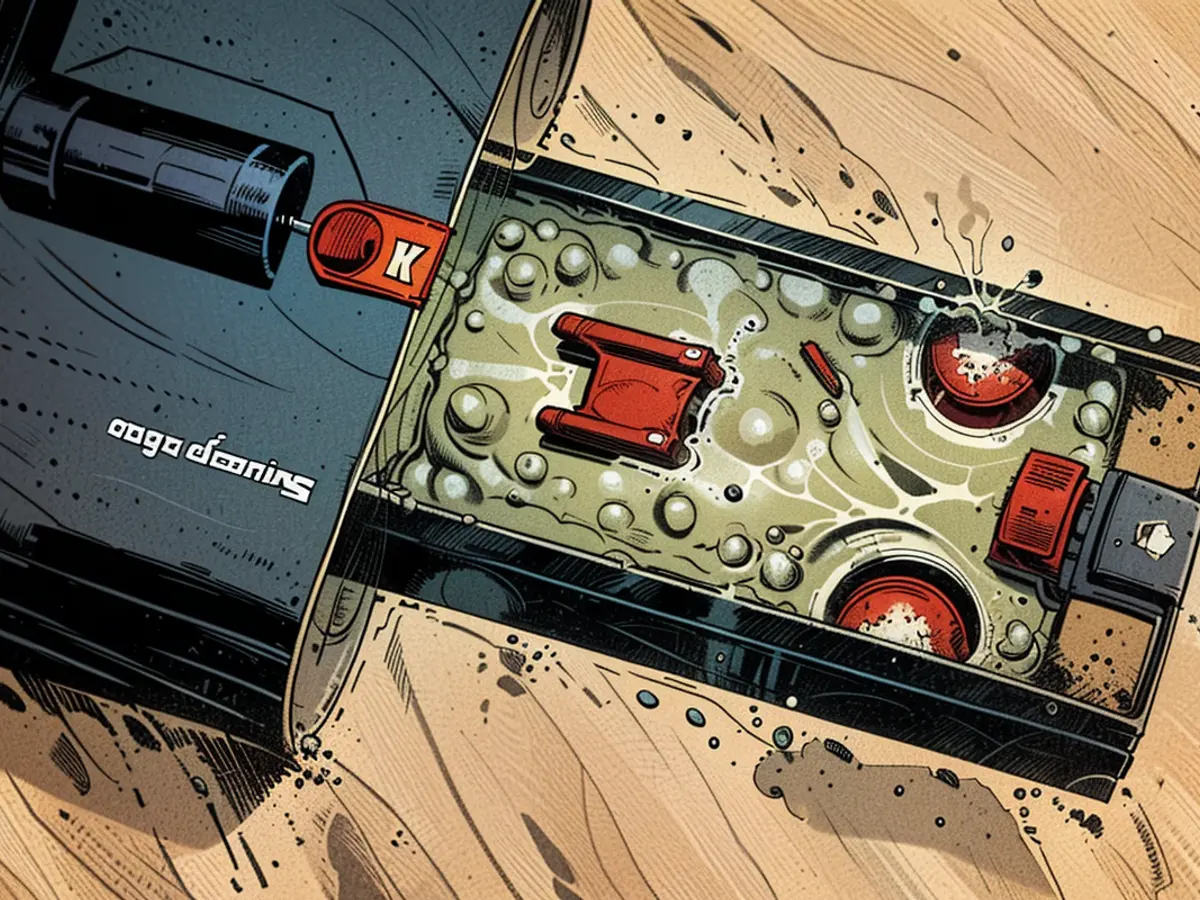
The Dyson WashG1 is best suited when used frequently and in short sessions. Someone who wants to clean the entire household once a week might bump into the battery capacity limit. Maximally, the battery lasts for 35 minutes according to Dyson, which should be sufficient for up to 290 square meters. However, this is only realistic with minimal dirt. The display shows how long one can still wipe.
Alternatively, one can purchase a replacement battery. However, it is not yet available on Dyson's website, so the price is unknown. The microfiber rollers need to be replaced approximately every six months according to Dyson, as indicated on the display. However, the price for this is also unknown. Only for the front dirt brush strip is a price mentioned, around 15 Euros, if it needs to be replaced. This, like all other spare parts, is easy to install.
Conclusion
Someone looking for an electric mop because there is often something to wipe up is well served by the Dyson WashG1. It takes up little space, is easy to operate, and makes thorough cleaning. A suction function is missed, and the self-cleaning function is excellent. However, the user must also put in some effort themselves, as competitors make it easier for users - and are often also cheaper.
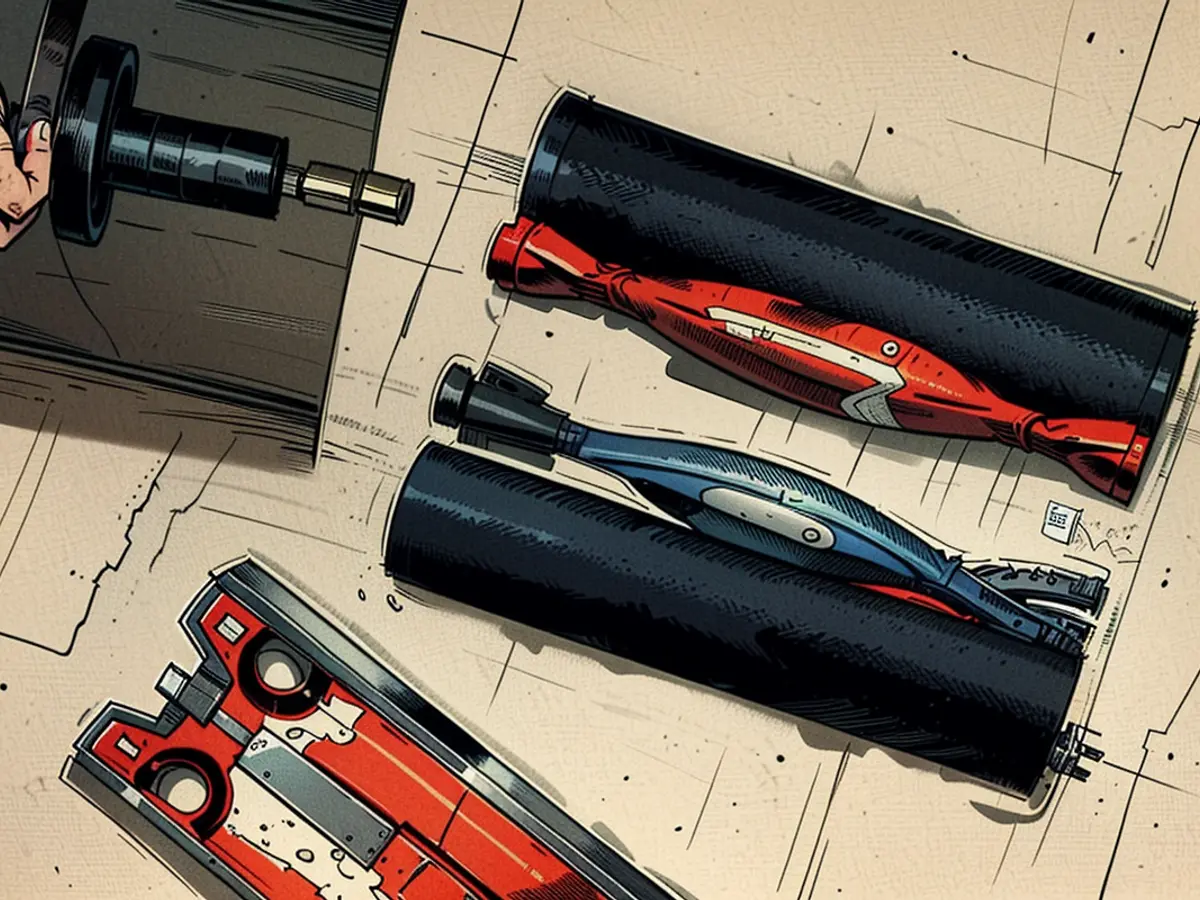
The Dyson WashG1's unique approach to floor cleaning, separating coarse dirt and liquids mechanically instead of using suction, is a testament to Dyson's commitment to innovative technology in their product lineup. Technical tests have shown that the WashG1 excels in its ability to clean thoroughly, especially along edges and at edges of furniture, making it an efficient tool for frequent and short cleaning sessions.
